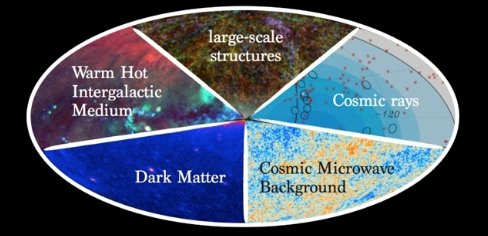Speaker
Dr
Alexander Kolodzig
(KIAA (Kavli Institute for Astronomy and Astrophysics at Peking University))
Description
Angular correlation studies of the cosmic X-ray background (CXB) fluctuations are becoming a new frontier of performing large-scale structure (LSS) studies with X-ray surveys, thanks to the accurate knowledge of X-ray luminosity functions, growing X-ray survey areas, and the high angular resolution of the current and future generations of X-ray telescopes. These studies give us access to faint and low luminosity X-ray source populations, which are hardly accessible be current and future LSS studies with resolved source samples.
I demonstrate with the Chandra survey XBOOTES (~9deg^2) that we can put new constraints on clustering properties on Active Galactic Nuclei (AGN) and galaxy clusters via CXB fluctuation studies with current and future large X-ray surveys. Thanks to the large area of XBOOTES, we have conducted the most accurate measurement to date of the angular correlations of the CXB fluctuations (0.5-2.0keV) for angular scales of <~17'. I will show that the CXB fluctuations above angular scales of ~2' originate dominantly from galaxy clusters, while below 2' they originate dominantly from unresolved AGN. We are the first to measure this transition zone and the clustering signal of galaxy clusters at small angular scales (~2' - 17'), where high-redshift (z>0.5) galaxy clusters are important. Further, we can show that at our given precision the clustering signal of the unresolved AGN population (median luminosity Lx ~ 10^{42.6}) is consistent with the assumption that a dark matter halo only hosts one AGN. This agrees with our current understanding of AGN triggering/fueling mechanisms.
Primary author
Dr
Alexander Kolodzig
(KIAA (Kavli Institute for Astronomy and Astrophysics at Peking University))




